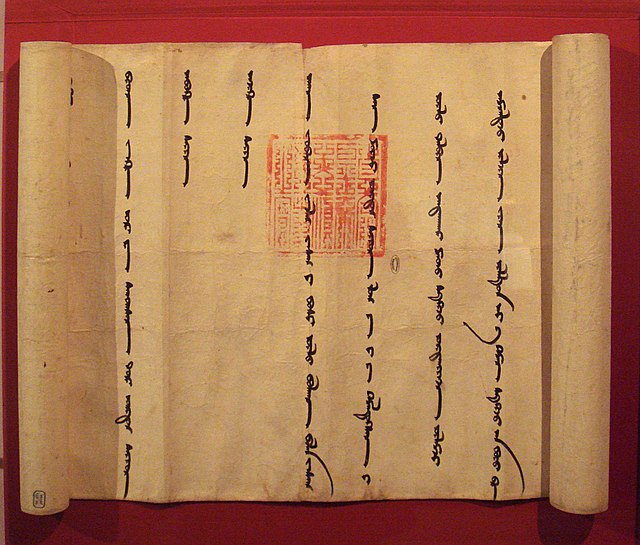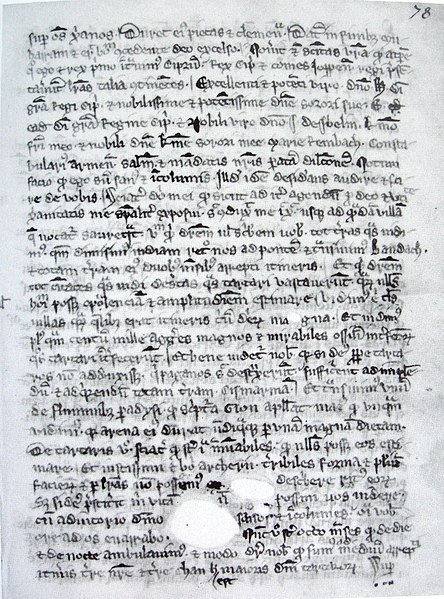Several attempts at a Franco-Mongol alliance against the Islamic caliphates, their common enemy, were made by various leaders among the Frankish Crusaders and the Mongol Empire in the 13th century. Such an alliance might have seemed an obvious choice: the Mongols were already sympathetic to Christianity, given the presence of many influential Nestorian Christians in the Mongol court. The Franks—Western Europeans, and those in the Levantine Crusader states—were open to the idea of support from the East, in part owing to the long-running legend of the mythical Prester John, an Eastern king in an Eastern kingdom who many believed would one day come to the assistance of the Crusaders in the Holy Land. The Franks and Mongols also shared a common enemy in the Muslims. However, despite many messages, gifts, and emissaries over the course of several decades, the often-proposed alliance never came to fruition.

1305 letter (a roll measuring 302 by 50 centimetres (9.91 by 1.64 ft)) from the Ilkhan Mongol Öljaitü to King Philip IV of France, suggesting military collaboration.
1246 letter from Güyük to Pope Innocent IV, written in Persian
1248 letter from Sempad the Constable to Henry I of Cyprus and Jean d'Ibelin
Mongol attack on Baghdad (1258)
Prester John was a legendary Christian patriarch, presbyter, and king. Stories popular in Europe in the 12th to the 17th centuries told of a Church of the East patriarch and king who was said to rule over a Christian nation lost amid the pagans and Muslims in the Orient. The accounts were often embellished with various tropes of medieval popular fantasy, depicting Prester John as a descendant of the Three Magi, ruling a kingdom full of riches, marvels, and strange creatures.
Prester John from Hartmann Schedel's Nuremberg Chronicle, 1493
Depiction of the Keraite ruler Toghrul as "Prester John" in "Le Livre des Merveilles", 15th century
"Preste Iuan de las Indias" (Prester John of the Indies) positioned in East Africa on a 16th-century Spanish Portolan chart
Prester John's coat of arms in an Italian edition of Sebastian Münster's Cosmographia, 1575.








